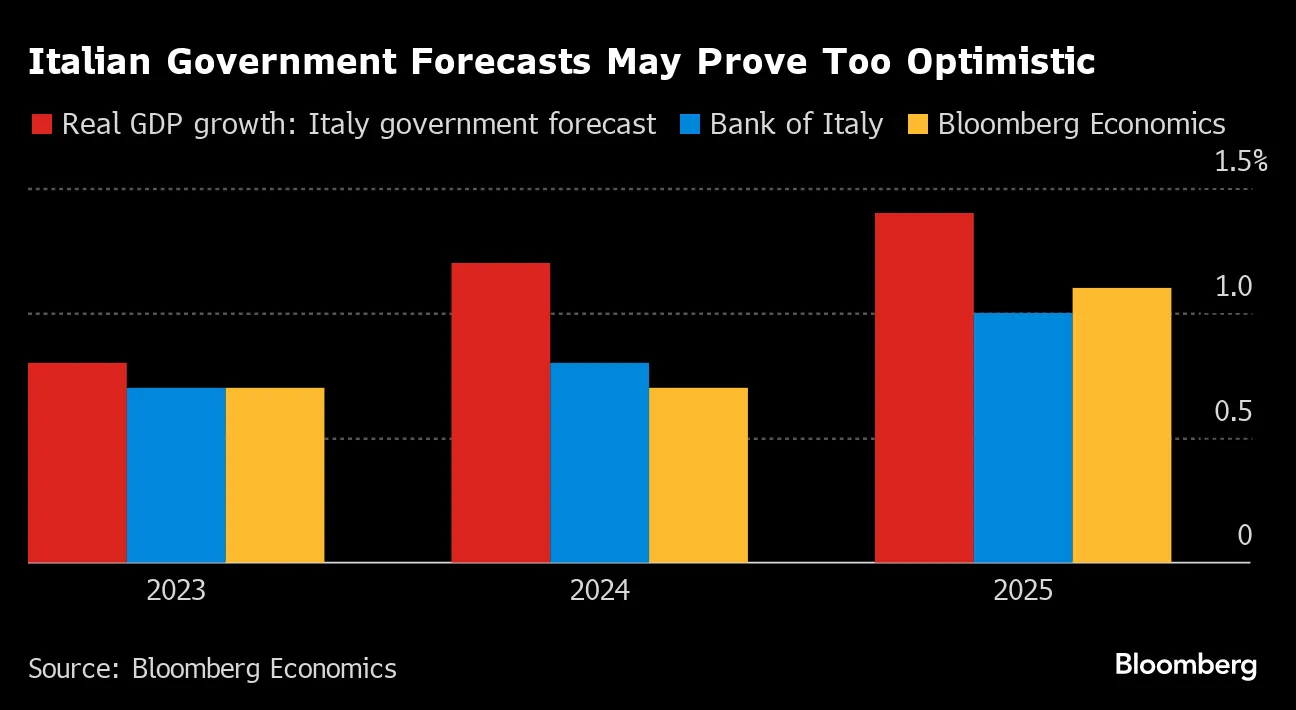Key Amendments in 2025 Budget Law
It must feel like a punch to the gut for Italian crypto investors to learn that beginning in the new year of 2026, liability payments are taking a sudden turn.
This development is the most significant duties legislation here since the asset class gained regulatory recognition. The bill increases capital gains percentage in relation to blockchain wallet transactions from 26% to 33%. But it doesn’t stop there.
This 27% increase in liability for all crypto accumulation will also see the €2,000 annual exemption that previously protected smaller owners chalked off. Although buyers and sellers still enjoy the 26% capital growth obligation for the rest of the current tax year, that privilege ends as the year ends.
This change affects the vast majority of Italians who own digital currencies, as most possess a value below the €2K benchmark. It also transforms duties from affecting primarily high-value holders to impacting virtually all Italian virtual cash proprietors.
Government revenue projections underlying these updates reflect ambitious targets. However, the novel budget law reform creates an opportunity for savvy enthusiasts to seek out fresh liability optimization strategies.

Impact Analysis: Who Gets Hit Hardest

Numerous questions have begun ringing in the minds of investors. Who gets hit the hardest, being the topmost? Here is what you should know.
The 27% increase disproportionately affects different trader profiles. For those with substantial unrealized appreciation, the difference between 2025 and 2026 could represent tens of thousands of euros in additional obligation.
Portfolio value thresholds reveal where the increases matter most. Traders with appreciation below €10,000 face an additional €700 in charges under the novel rate. However, those with growth exceeding €100,000 shall pay an additional €7,000. This is literally enough to fund a luxury vacation.
In an already volatile market, it is predicted that traders’ reaction to these impending amendments will increase trading volumes in the fourth quarter of 2024. Presumably, the first quarter of this year as well, as owners accelerate gain realization to capture the lower percentage.
Interestingly, comparing other EU jurisdictions reveals that Rome’s increasingly aggressive stance might become unfavorable. While this novel budget bill could make Italy one of the highest-charging fiscal countries for virtual money in the EU, countries like Germany still offer duty-free treatment for blockchain wallets held longer than one year. This might lead to capital flight from Italy to more crypto-friendly European jurisdictions.
The elimination of the €2,000 exemption shall force casual enthusiasts who previously operated tax-free into the formal system. This will psychologically discourage small-scale virtual cash participation and innovation.
Transition Rules and Strategic Windows

Basically, understanding the transition rules between 2025 and 2026 creates critical opportunities for optimization. The transitional step-up regime allows blockchain assets' fair market value as of January 1 this year to be recognized for tax purposes, subject to the payment of an 18% substitute option. This means investors get to opt for the 18% substitute on their January 1 portfolio values. That way, immediate growth is charged at 18% until the commencement of a 33% rate on future growth.
Similarly, those with mixed-year plans will have to reshuffle their options to optimize fiscal outcomes. In simpler terms, virtual assets purchased this year cannot be disposed of in 2026, as they shall come under the new tier. Instead, disposal should be done late this year, preferably in the last quarter. It equally makes room for strategic purchases over that span.
Market timing risks when accelerating gain realization become a quandary. For context, it means possessors who sell positions this year to capture the lower tier forfeit the potential upside if blockchain asset markets continue rising.
Therefore, there is the need for professional guidance to ensure accurate analysis and planning given the complex optimization scenarios that arise from the interaction between the old and the novel rules.
Navigating these complex transition rules and timing windows is often overwhelming, especially for active crypto traders. 8lends helps Italian investors streamline portfolio tracking, monitor unrealized accumulation, and plan accelerated realizations with real-time impact calculations. With 8lends, you come to confidently identify the optimal timing for sales, substitution elections, and loss harvesting, reducing errors while maximizing your window before 2026.
Strategic Response Options: Maximizing the 2025 Window

The next hurdle will be how to maximize the window.
Accelerated accumulation is a first step to directly counter the fiscal amendments. Those with significant unrealized appreciation have the chance to lock in 26% by realizing profits before December 31, 2025. Some blockchain wallet owners are already planning to liquidate their positions anyway, while others just want to cash in.
Calculating acceleration for substantial appreciation is often enthralling. Imagine an investor with €50K in unrealized accruals that gets to save €3.5K by realizing in 2025 versus 2026. Now, do the math for those with €100K in growth. The savings double to €7K. That alone exceeds annual investment returns in traditional assets.
However, acceleration strategies carry significant risks. Sellers this year miss out on the appreciation offered by the market’s potential continuous rise. In addition, loss harvesting becomes more valuable as strategic loss realization has the potential to optimize overall portfolio duties efficiency.
Consider advanced strategies such as gifting virtual cash to family members who get to then realize appreciation at potentially lower personal obligation rates. Charitable giving of appreciated virtual currency to eliminate capital growth while claiming deductions and establishing legal structures that might provide ongoing liability efficiency are equally strategic in maximizing the window.
Alternative Options: The 18% Election Becomes More Attractive
The 18% substitute option couldn’t be more attractive than it is since the proposal of the new rates. Before this offering, the choice between an 18% substitute and a 26% capital gains tax provided modest optimization opportunities. With capital accrual charges rising to 33%, the 18% option becomes substantially more likable.
The alternative now looks like a better choice simply because it guarantees flat-rate obligations for investors who generate frequent profit. Furthermore, for multi-year planning considerations, the substitute applies to all qualifying investment income, not just digital cash accumulation. It helps possessors plan accordingly.
On top of that, advanced election strategies include early commitment to the substitute regime before market conditions change. Wallet owners confident in their trading strategies might benefit from locking in 18% rates rather than facing a potential 33% on unpredictable future growth.
Break-even calculations also reveal new thresholds where the substitute provides optimal outcomes. Some investors with consistent trading activity or substantial ongoing appreciation shall find that the 18% flat rate provides better long-term efficiency than the higher capital accrual rates.

Long-term Market Implications: Competitive Challenge
With the emergence of these novel tiers, this market is to suffer multiple challenges. One such risk is the risk of capital flight. Since blockchain markets are without borders, investors get to easily relocate to more favorable jurisdictions within the EU. Top pick countries where buyers and sellers can enjoy favorable fiscal laws include countries like Portugal, Germany, and Malta, among others.
In a world where innovation is always moving, Italy may be affected by its proposed high percentages. Blockchain startups would be tempted to establish their operations elsewhere rather than in Italy. This shall, in turn, limit the country's participation in the growing blockchain economy. Both asset holders and the government are liable to lose investment opportunities.
There’s also a high probability that countries offering favorable treatment for virtual money activities will attract Italian capital and talent. This renders the nation’s competitive disadvantage evident when compared to crypto-friendly jurisdictions, potentially creating brain drain effects in the emerging virtual cash sector.
Additionally, International coordination through EU initiatives like MiCA (Markets in Crypto-Assets Regulation) might eventually harmonize digital currency duties across member states. This could assist in reducing competitive disadvantages.
Compliance and Implementation

The new duties bill in the country comes with a reality that requires some alignment. Owing to these tax modifications, which come into effect in the new year, traders will require enhanced record-keeping. The elimination of the €2K exemption means that virtually all digital currency transactions now require documentation and potential accounting reporting.
Subsequently, professional consultation becomes essential for enthusiasts with substantial holdings or complex trading patterns. The interaction between transition rules, options, and novel requirements must be well understood.
Also, trading software and portfolio tracking tool adjustments will be required to accommodate the new rates and requirements. Ultimately, regular system updates across the blockchain ecosystem and audit preparations shall also be included in the new charges brochure.
Conclusion
In a nutshell, there will be a fundamental shift in the Italian cryptocurrency landscape facilitated by the new budget law. Also, the hurdles and opportunities provided by the law, which include enhanced compliance requirements, higher rates, and eliminated exemptions, all require critical consideration from both virtual currency holders and the government.
Actions need to be taken decisively for any chance at achieving tax optimization under the current rules. As the Italian crypto regime continues evolving, staying informed about regulatory amendments and maintaining flexible strategies will be essential for long-term success. The investors who adapt successfully to these modifications shall be best positioned for future opportunities in this maturing crypto market.
That said, the right tools make a huge difference. 8lends automates gain tracking, manages elections like the 18% substitute, and simplifies portfolio reporting across multiple exchanges.
Sign up today to take control of your digital currency, optimize your strategy, and stay compliant under the evolving Italian rules.








